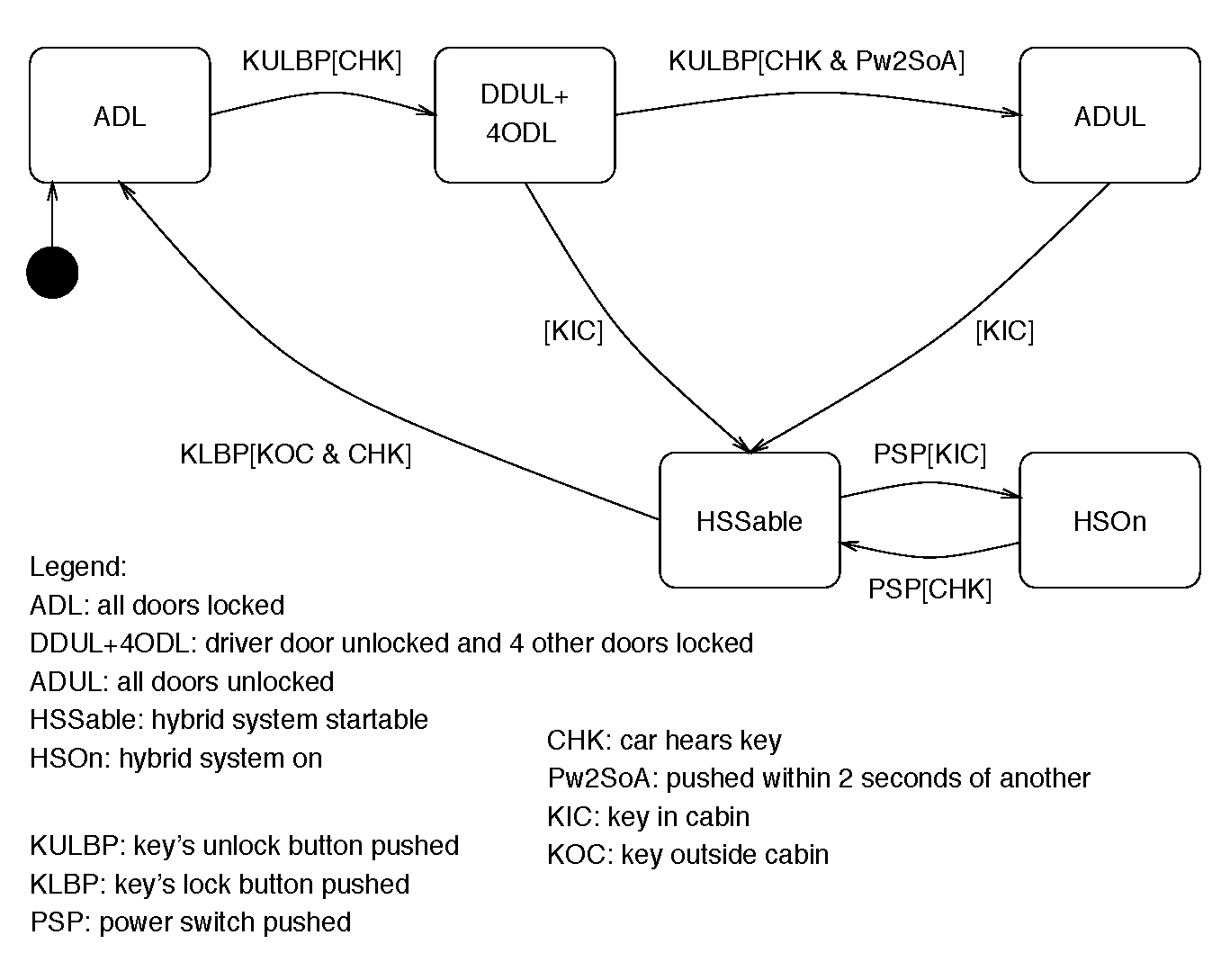
Please note the two documents,
The first is the full user's manual for the 2018 Toyota Prius. The second is that part of the first that appears to be relevant to the electronic key subsystem of the vehicle; it is built by extracting pages from the first.
Please read only the second in full detail. The first is provided in case you find something not fully specified in the second and need to look up more. In that circumstance, you will be most likely extracting additional pages from the first and adding them to the second.
(The professor for this class owns a 2017 Prius. While the full user's manuals for the 2017 and 2018 Priuses are different, it turns out that the pages of the 2017 full manual that appear to be relevant to the electronic key subsystem are identical to those for the 2018 Prius.)
The basic, high level requirement, R, for the electronic key is described by the state transition diagram:

It would appear that the described behavior, S, of the Prius's electronic key subsytem is intended to entail these requirements R. However, there are a number of domain assumptions, D, that must hold for the entailment to work. These assumptions include, but are not limited to, that the battery of the electronic key is alive. (You will have a deliverable in which you identify as many such domain assumptions as you can.)
Toyota's ultimate fall back for when D does not hold is that the Prius owner calls Toyota service to come and fix things. However, when one is in a hurry, or one is hearing impaired, it may be inconvenient or even impossible to do so. So it is desired to improve the behavior of the Prius's electronic key subsytem so that the need for this ultimate fall back is reduced or possibly even eliminated.
That is, your job is to improve the electronic key subsystem of the 2018 Prius to reduce as much as possible the fall back of having to call Toyota service when
In other words, as much as possible, make it possible to unlock and start a Prius's hybrid system if you have the Prius's electronic key even with a completely dead electronic key battery.
Note that it will not be acceptable to go back completely to the old mechnical key system and not use an electronic key at all. Insurance companies charge more for theft coverage when the key is not electronic.
Produce an update to the contents of the KeysPrius2018Owner_sManual.pdf describing your improvement. Your update must include at least the pages in the KeysPrius2018Owner_sManual.pdf. You may need to include an update of the contents of more pages extracted from the full user's manual
Please highlight somehow all of your changes, be they modifications of existing text, additions to the existing text, or deletions. For a deletion, somehow mark the spot where the deleted text was.
Add to your document a list of
If the full list of post-modification domain assumptions is D',